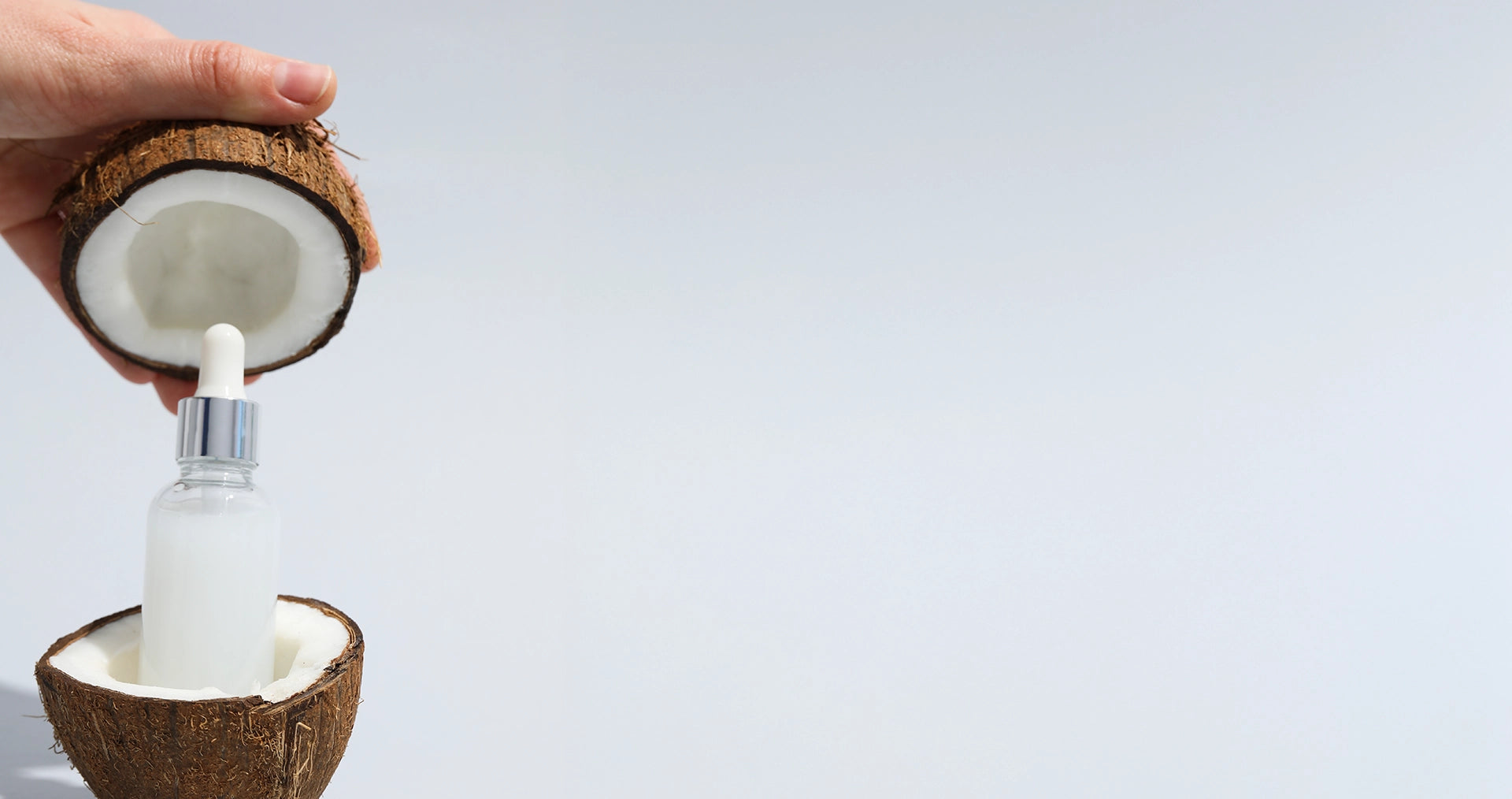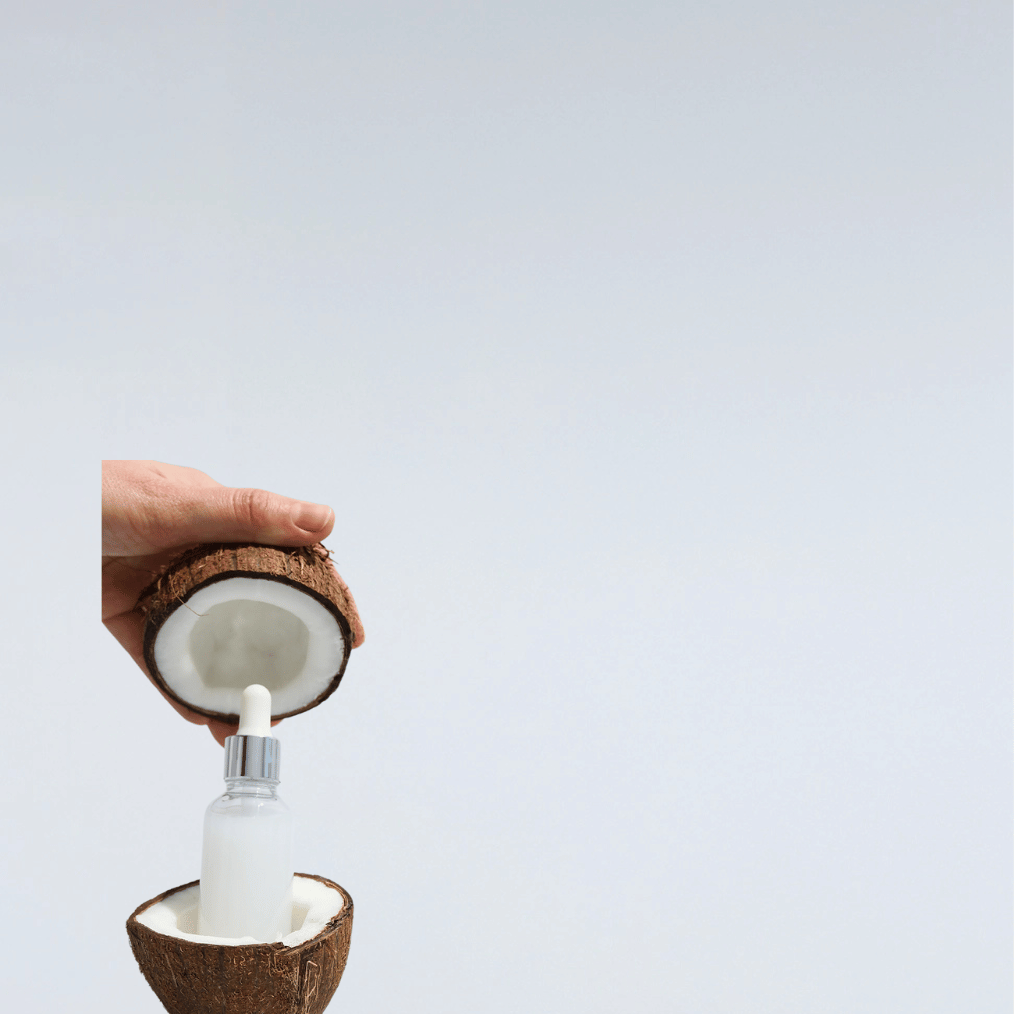

Spend $55.00 to Get Free USA Shipping



• Caprylic triglyceride is derived from coconut oil and glycerin, making it a plant-based ingredient that combines the best of both worlds.
• This clever compound mimics your skin’s natural oils, helping to reinforce your moisture barrier without clogging pores. It’s like a protective hug for your face!
• Caprylic triglyceride acts as both an emollient and a solvent, helping other ingredients penetrate deeper into your skin.
• This ingredient also extends the shelf life of products by preventing other ingredients from oxidizing.
• With a remarkably low irritation profile, this ingredient is ideal for reactive skin types. In fact, dermatological studies show it can actually help calm inflammation while moisturizing!
Despite the sciency-sounding name, the journey of caprylic triglyceride is as fascinating as it is lengthy, stretching back further than you might imagine!
Caprylic triglyceride, at its core, is a luxurious ester derived from coconut oil and glycerin. While the modern purified version we know today emerged in cosmetic formulations during the mid-20th century, its foundation ingredients have been used for centuries. Coconut oil, one of its primary components, has been a skincare staple in tropical regions since ancient times, with documented use in Ayurvedic medicine dating back over 4,000 years.
The transformation from humble coconut oil to refined caprylic triglyceride represents a beautiful marriage between nature and science. In the 1950s and 1960s, as cosmetic chemistry advanced, formulators sought ingredients that offered the moisturizing benefits of natural oils without the potential drawbacks like heaviness or rancidity. This quest led to the isolation and refinement of medium-chain triglycerides (MCTs) from coconut oil, with caprylic triglyceride emerging as a star performer.
By the 1970s, caprylic triglyceride had secured its place in cosmetic formulations, but its popularity truly soared in the 1990s and early 2000s. As consumers began demanding more from their products – lightweight textures, longer shelf life, and compatibility with sensitive skin – formulators increasingly turned to this reliable workhorse. Its ability to disperse pigments evenly also made it a game-changer in makeup products, creating that silky application we all love in our foundations and lipsticks.
The clean beauty movement of the 2010s further cemented caprylic triglyceride’s status as a skincare superstar. Unlike many synthetic alternatives, it offered formulators a naturally-derived option that performed beautifully without raising concerns about harsh chemicals. Its low comedogenicity (fancy speak for “won’t clog your pores”) made it suitable for virtually all skin types, from oily to dry and everything in between.
What’s particularly fascinating about caprylic triglyceride’s evolution is how it bridges traditional wisdom with cutting-edge science. Those tropical communities that used coconut oil for generations were onto something – they just didn’t have the technology to isolate the specific components that made it so beneficial. Modern extraction and refining processes have simply allowed us to enhance what nature already provided.
Today, as we dive deeper into understanding the molecular magic behind skincare ingredients, caprylic triglyceride continues to impress researchers and dermatologists alike. Its ability to enhance the delivery of active ingredients, stabilize formulations, and provide substantial moisture without heaviness makes it a formulator’s dream come true. And as we’ll discover in the following sections, the scientific evidence supporting its benefits is as rich and abundant as the ingredient itself.
Caprylic/capric triglyceride has emerged as a cornerstone ingredient in modern skincare formulations, supported by robust scientific research demonstrating its versatile benefits for skin health and barrier function. This medium-chain triglyceride offers a unique combination of sensory properties, functional benefits, and excellent safety profile that makes it particularly valuable across diverse product categories.
Research has established caprylic/capric triglyceride as a multifunctional cosmetic ingredient that serves as a “fragrance ingredient, skin conditioning agent-occlusive, and solvent” with concentration usage ranging from as little as 0.0000067% to as high as 95.6% in cosmetic formulations (Fiume et al., 2022). The flexibility in usage concentration underscores its versatility across different product types. Since 2003, the cosmetic industry has dramatically increased its reliance on this ingredient, with reported usage growing from 763 formulations to over 6,000 formulations by 2017, representing nearly an eight-fold increase (Fiume et al., 2022).
The ingredient’s popularity extends globally, with documented usage in formulations targeted to different geographical markets. Research has shown it serves as a key oil phase component in emulsions developed for regions like Brazil and India (Roso et al., 2023), where it is often combined with other emollients thanks to a range of beneficial properties for the skin (Magrode et al., 2024). The physical characteristics that support its performance include an average molecular weight of 500 g·mol⁻¹, viscosity of 30 mPa·s (higher than many comparable emollients), and a LogP value of 8.2-10.9, collectively contributing to its medium-light skin feel and occlusive potential (Magrode et al., 2024).

Clinical research has demonstrated significant skin barrier benefits from caprylic/capric triglyceride applications. A study examining an emollient emulsion containing 15.0% w/w of caprylic/capric triglyceride found it significantly increased skin surface hydration (p < 0.001) while simultaneously reducing transepidermal water loss (TEWL) (p = 0.005) compared to untreated skin (Souza Neto et al., 2023).
Beyond surface-level moisturization, caprylic/capric triglyceride positively impacts deeper skin biochemistry. Research has shown that preparations containing this ingredient can almost double the concentration of urocanic acid (UCA) isomers in the stratum corneum, suggesting it enhances the skin’s natural moisturizing factor (Souza Neto et al., 2023).

A significant advantage of caprylic/capric triglyceride is its exceptional skin compatibility. Comparative studies have found it demonstrates significantly better skin tolerance than other vehicle ingredients like propylene glycol. In a 21-Day Cumulative Irritancy test conducted on 25 subjects, caprylic/capric triglyceride recorded a dramatically lower irritation score of just 4, compared to propylene glycol’s score of 72 (p < 0.01), confirming it as non-irritating and non-sensitizing (Patel et al., 1984). Multiple toxicological assessments have consistently demonstrated no signs of systemic toxicity across concentrations and testing models (Fiume et al., 2022).
This impressive safety profile, combined with enhanced delivery capabilities—providing higher steady-state penetration flux for various active compounds compared to alternative vehicles—makes it particularly valuable for formulations requiring higher concentrations of functional ingredients (Patel et al., 1984).
The collective research affirms why caprylic/capric triglyceride has become an essential ingredient in modern skincare formulations. Its combination of sensory aesthetics, functional performance, and excellent safety profile makes it uniquely suited to address diverse skincare needs across different skin types, formulation requirements, and geographical preferences.
Caprylic triglyceride isn’t just impressive in laboratory studies—it’s a skincare superstar in countless products you likely use daily. From lightweight essences to rich creams, there are thousands of formulations that use it to deliver benefits in virtually all skin types.

🥥 Despite its occlusive properties, caprylic triglyceride has a unique molecular structure that makes it unlikely to contribute to acne or congestion. This makes it ideal for facial moisturizers designed for combination to oily skin types.
🥥 The excellent solvent properties of caprylic triglyceride make it a key ingredient in gentle makeup removers and cleansing oils. It effectively dissolves stubborn makeup (even waterproof formulas) while simultaneously conditioning the skin.
🥥 Due to its ability to improve penetration flux, caprylic triglyceride serves as an excellent carrier for active ingredients like retinol, vitamin C, and peptides. As such, it helps maximize the efficacy of your treatment products.
🥥 In overnight treatments, the occlusive properties of caprylic triglyceride create an ideal environment for skin repair. These formulations help lock in moisture and other beneficial ingredients while you sleep.
🥥 With its exceptional safety profile and low irritation potential, caprylic triglyceride is featured prominently in products formulated for sensitive, reactive skin types. Its ability to strengthen the skin barrier makes it particularly beneficial for conditions like rosacea and eczema, where barrier dysfunction plays a central role.
Revitalize dry, tired skin with our luxuriously rich day and night cream. Powered by chlorella, tremella mushroom, tamanu seed and hibiscus, these adaptogenic botanicals and micro-algae provide all-day hydration while keeping flare ups at bay. With 7 potent actives, it goes beyond hydration to brighten, firm, and maintain moisture levels, helping to calm the skin and prevent future flares. (1.7 fl. oz)
1. Effect of an Emollient Emulsion Containing 15.0% of Caprylic/Capric Triglyceride on the Urocanic Acid of the Stratum Corneum
2. Retinol Stabilization by Pseudo-Liposome and Lamellar Liquid Crystal
3. Evaluation of the Penetration and Efficacy of Topical Anti-Aging Compounds
4. Diversity Challenge in Skin Care: Adaptations of a Simple Emulsion for Efficient Moisturization across Multiple Geographies
5. Comparative study of propylene glycol and caprylic/capric triglyceride vehicles for topical application
6. Microemulsions and Nanoemulsions for Topical Delivery of Tripeptide-3: From Design of Experiment to Anti-Sebum Efficacy on Facial Skin
7. Amended Safety Assessment of Triglycerides as Used in Cosmetics